Napoleon’s Tomb- History, Design and Tips for Visiting Napoleon Bonaparte’s Tomb in Les Invalides
Purchases made through links earn us a small commission, at no extra cost to you.
Napoleon Bonaparte, or Napoleon I as he was later known, was a prominent commander in the French military as well as a political leader. His role in the French Revolution first gained him recognition and he went on to lead successful campaigns in the Revolutionary Wars, ultimately being crowned Emperor of the French.
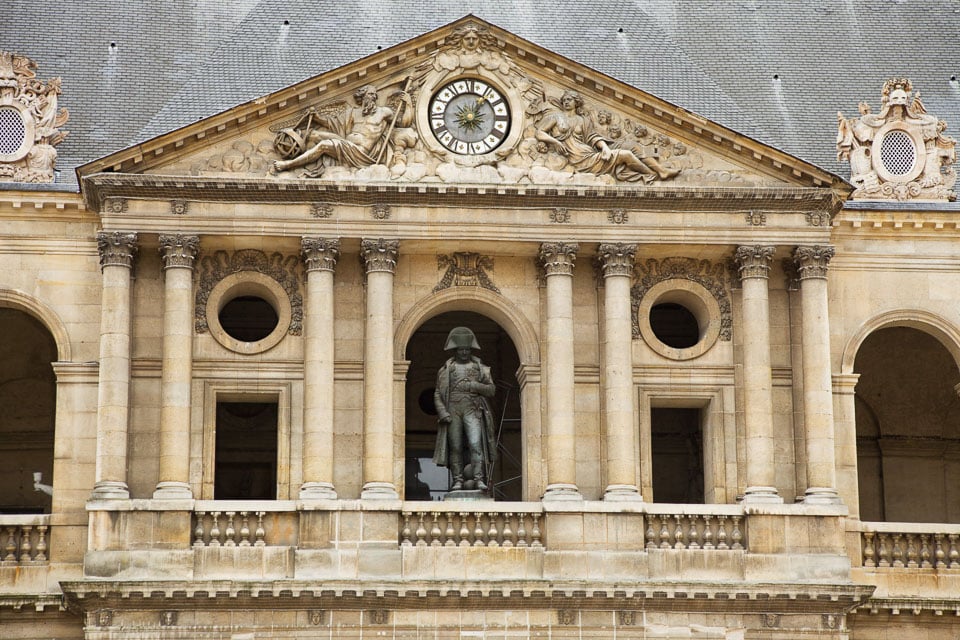
Napoleon’s burial place under the golden dome of Les Invalides is fit for an emperor, boasting a grand sarcophagus, elegant columns, and stone statues.

In this guide, you will learn about Napoleon’s tomb as well as information about who he was and why he was important.
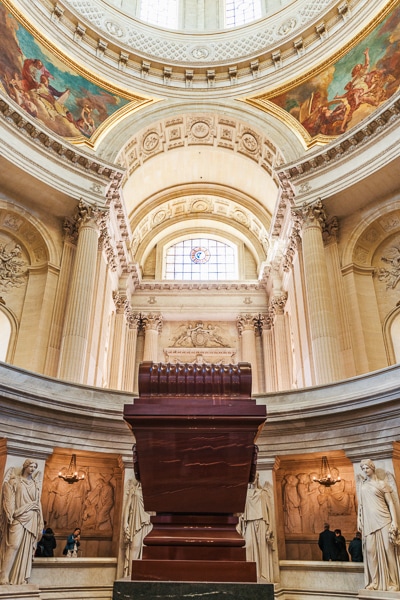
In This Post
Napoleon Bonaparte – Who Was He?
Napoleon Bonaparte was born on the 15th of August 1769 on the island of Corsica in France. After rapidly rising through the ranks in the French military between 1789 and 1799, Napoleon eventually became the Emperor of the French in 1804.

Napoleon was an extremely skilled military strategist who was incredibly ambitious and somewhat of a risk-taker. These traits saw him conquer a large portion of Europe in the early 19th century. However, his overconfidence saw him lead a disastrous invasion of Russia in 1812.
After his invasion, he abdicated and was exiled to the island of Elba, but later returned to power for a short 100-day stint. It was at the Battle of Waterloo that Napoleon was once again defeated and abdicated once more. He was then exiled to St Helena, which ended up being his place of death in 1821 at the age of 51.
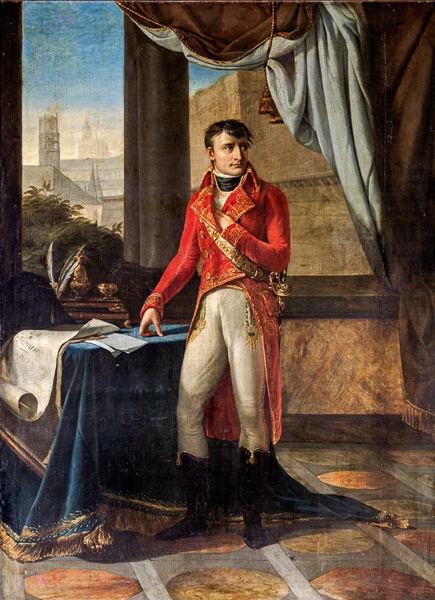
Napoleon was later moved to Paris which would become his final place of rest. Today, you can find Napoleon’s tomb at Les Invalides where you are able to visit and learn about this famous (or infamous) French Emperor.

History of Napoleon’s Tomb
After Napoleon’s body was repatriated to France from St Helena in 1840, workers began to lay his remains to rest in a carefully constructed sarcophagus. Located at Les Invalides, Napoleon’s tomb took 20 years to complete after its planning commenced upon his corpse’s return to his motherland.
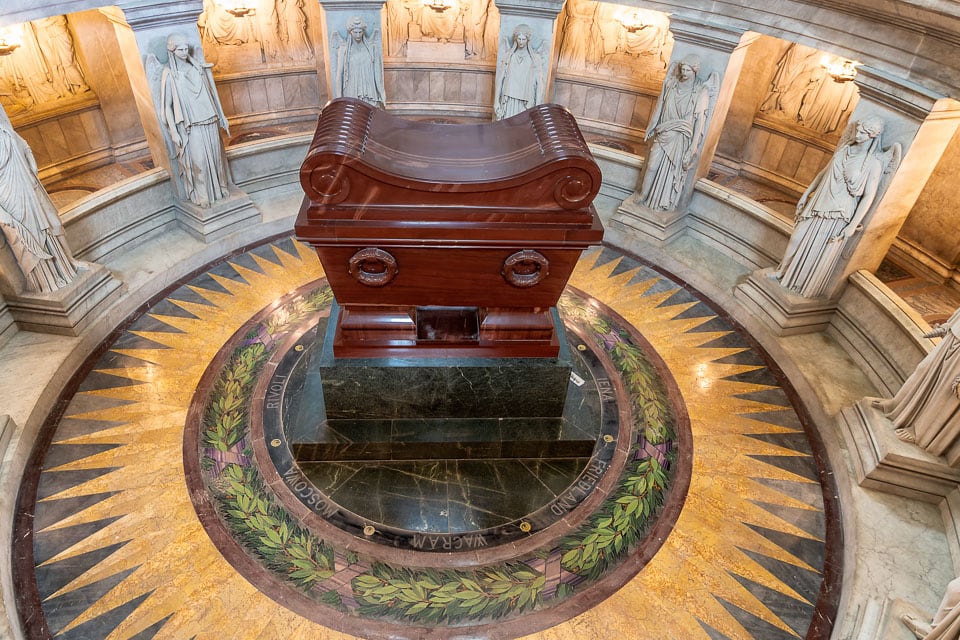
Napoleon Bonaparte’s tomb was inaugurated on the 2nd of April 1861 by Napoleon III. During the lengthy time of construction, the promoter, architect, and main sculptors of Napoleon’s tomb had all died, so they were not present at the tomb’s unveiling.
Design of Napoleon’s Tomb at Les Invalides
Napoleon’s tomb was designed by architect Louis Visconti, who carefully planned the final resting place for the French Emperor. He created an open crypt that lay below the towering dome of Les Invalides.

The crypt can be accessed through a door that is framed with two atlantes, above which you can find an inscription of Napoleon’s wish to be buried in Paris. The surrounding circular gallery is supported by twelve pillars. On these pillars, you can see the Victories sculpted by James Pradier.
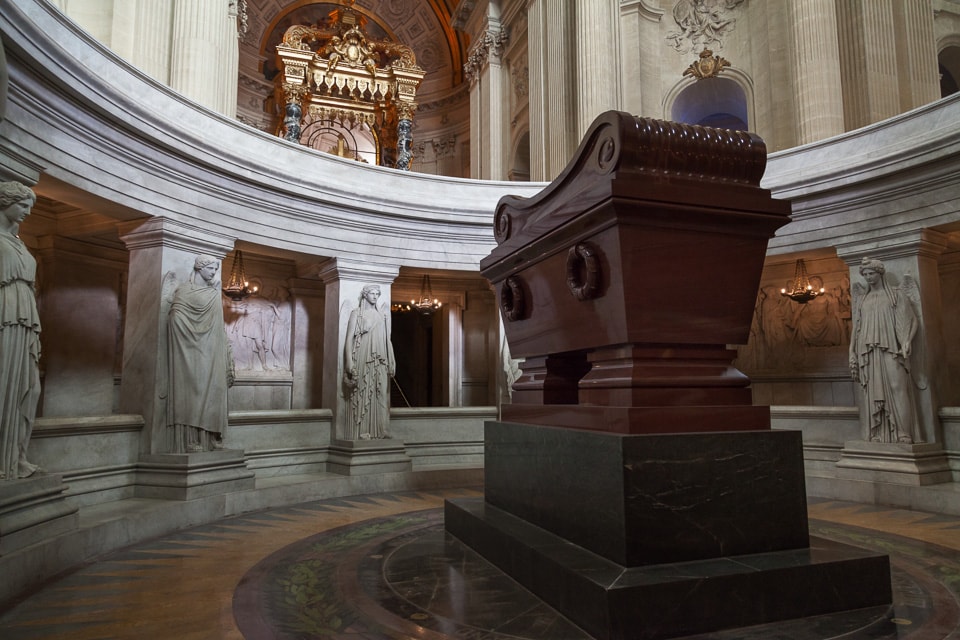
Further decorating the gallery’s wall are ten relief panels, each of which celebrates the achievements of Napoleon during his lifetime. Lastly, there are two additional panels that were designed by François Jouffroy to commemorate the retour des centres (return of Napoleon’s mortal remains). The inner chamber also houses a partly gilded statue of Napoleon dressed in coronation attire.
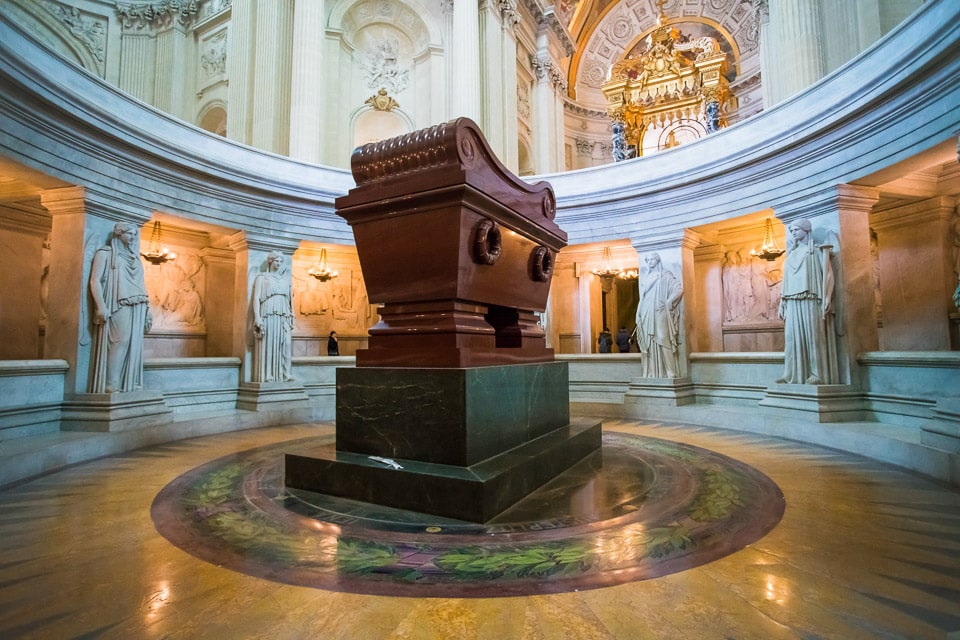
The main piece of Napoleon’s tomb is the sarcophagus which sits directly in the middle. It is made from purple quartzite and contains six nested coffins made from various materials such as oak, mahogany, lead, iron, tin, and ebony.
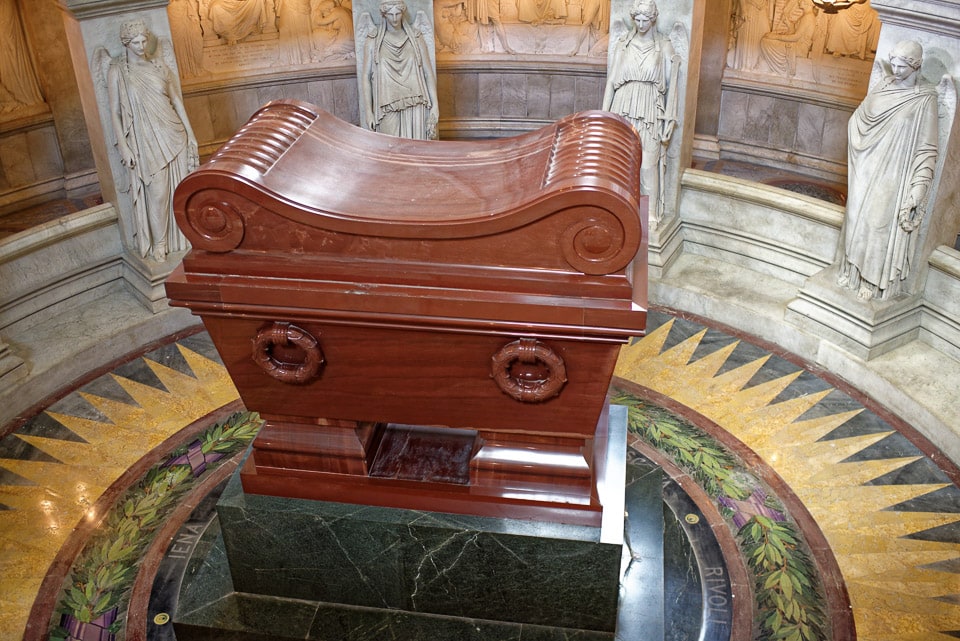
Napoleon’s sarcophagus rests atop a base made from green granite. Finally, the green granite sits on a slab of black marble to complete the impressive, multi-layered resting place for Napoleon.
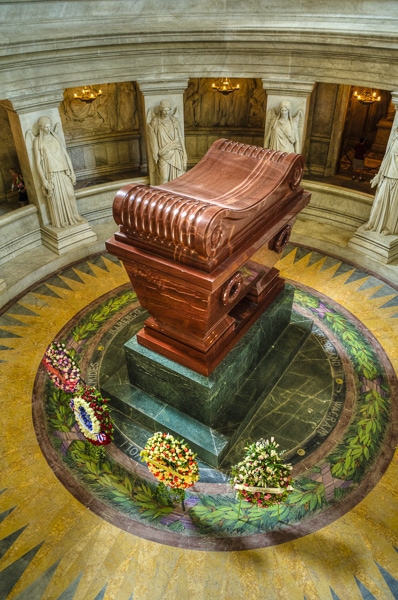
Later Additions to the Crypt
The tombs of Napoleon’s brothers, Jérôme Bonaparte and Joseph Bonaparte, were later added inside the Dome church after their deaths in 1862 and 1864 respectively. The coffin of Napoleon II was also brought to the tomb, placed in the underground chamber, and covered by a marble slab.
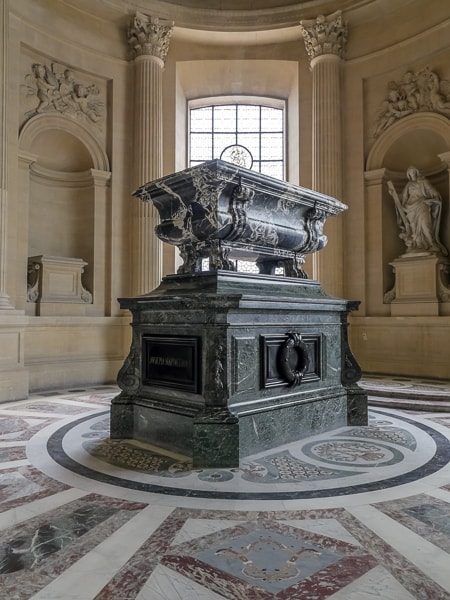
2021 marked the second centenary of Napoleon’s death and as such, a temporary installation titled “Memento Marengo” was commissioned and placed above the sarcophagus. The piece is an homage to Napoleon’s favourite horse, Marengo, who was captured during the Battle of Waterloo.
What You Can Expect When Visiting Napoleon’s Tomb
The final burial site of Napoleon is nothing short of spectacular. The two-level tomb is surrounded by murals, sculptures, gold, and other impressive artworks.
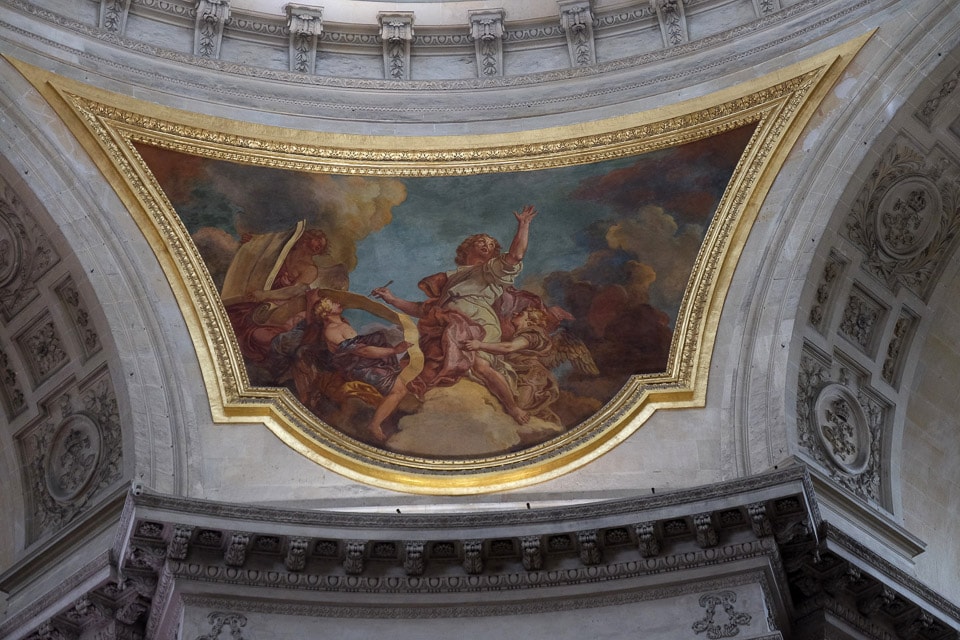
To get a close-up view of the crypt, you need to take a walk downstairs and pass two giant statues. The door you pass through is made from a cannon used in one of Napoleon’s most famous victories, Austerlitz.
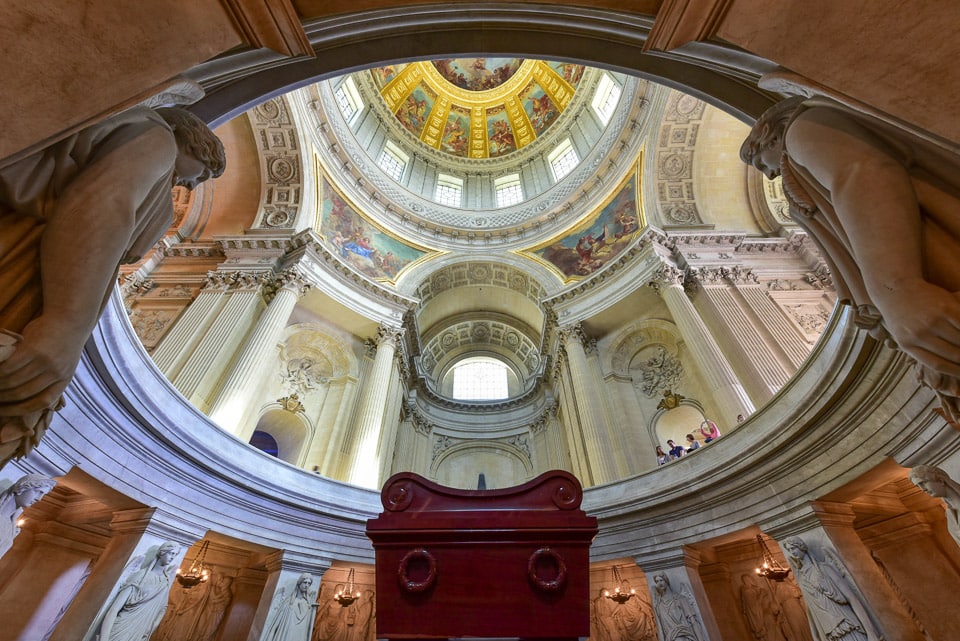
When you visit Napoleon’s tomb, be sure to check out the Army Museum inside Les Invalides too – it is included in your ticket price.
Interesting Facts About Napoleon’s Tomb and Les Invalides
While you are now equipped with most of the information about Napoleon’s tomb, there are a couple of interesting facts about Napoleon’s burial site that haven’t been mentioned yet.
First up, the Royal Chapel (Dome des Invalides) was once the highest building in Paris until the erection and completion of the Eiffel Tower in 1889.

Another interesting fact is that Les Invalides was invaded by rioters in 1789. They stole cannons and muskets that were housed in the cellars and used them to attack the Bastille in one of the most significant moments in the French Revolution.
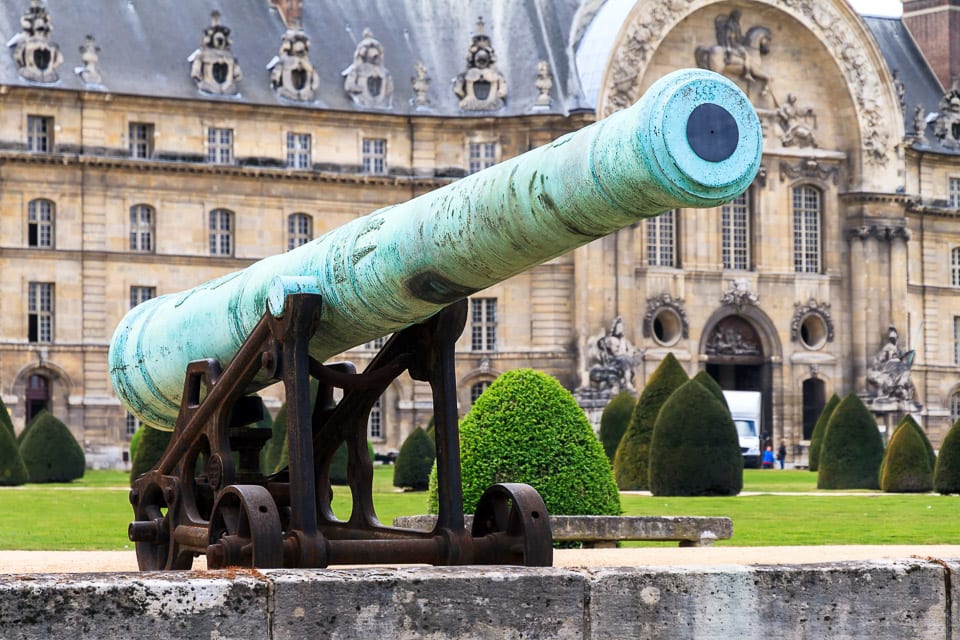
As for Napoleon’s tomb itself, part of the reason it took so long to complete was that the stone was quarried in Russia, upon special permission from Tsar Nicholas I, and then shipped to Paris. The sculpting of Napoleon’s sarcophagus was time consuming as well, taking several years using steam-machinery techniques that were innovated at the time.
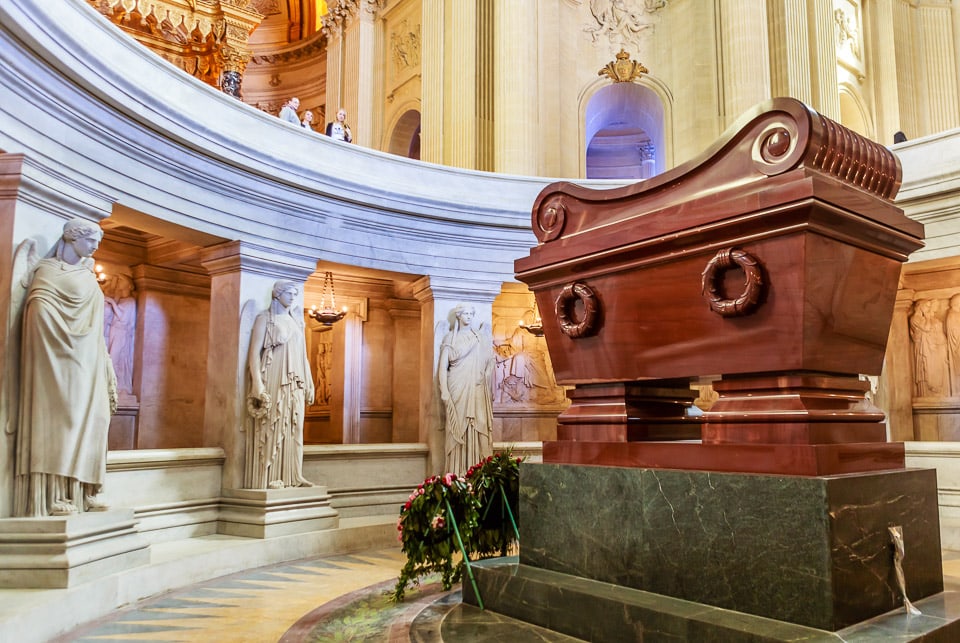
Final Words
No trip to Paris is complete without a visit to the tomb of Napoleon Bonaparte, one of the most famous people buried in Paris. Although Napoleon was small in stature, his tomb is of magnificent proportion and lavishly decorated, representing his larger-than-life persona. He was such an important person in French history and by visiting his tomb, you will begin to get a better understanding of him and his life, from the time of his rule until his death on St. Helena.
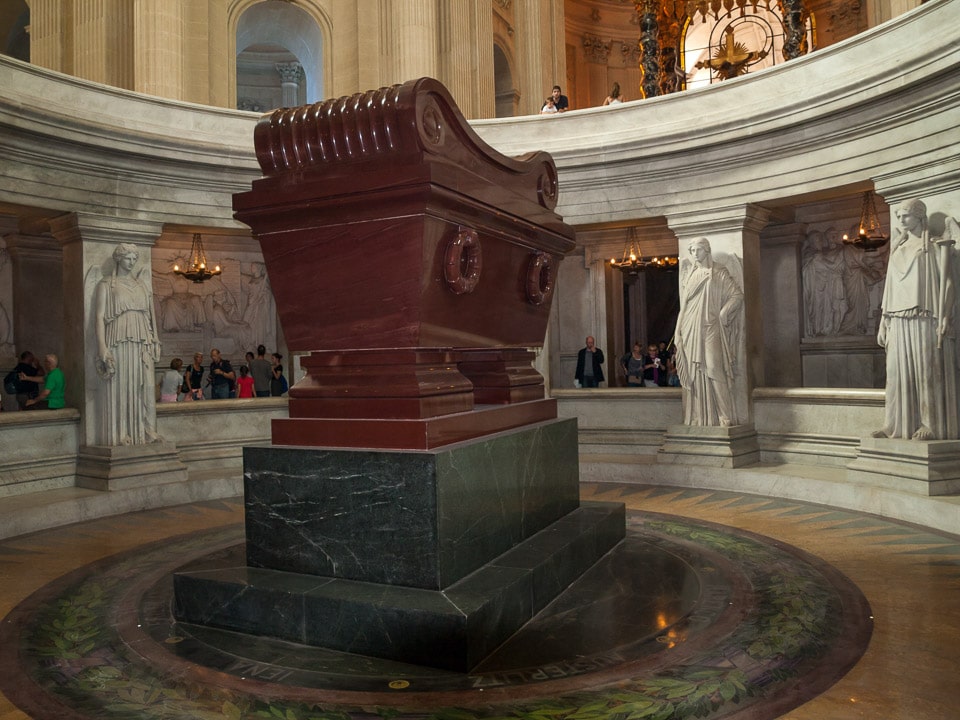
Les Invalides is a great place for young and old to visit, especially if you are interested in the history of France under the leadership of Napoleon. In addition to Napoleon’s tomb, it’s worth checking out the adjoining Army Museum where you can see suits of armour, weaponry, and other historical artifacts.
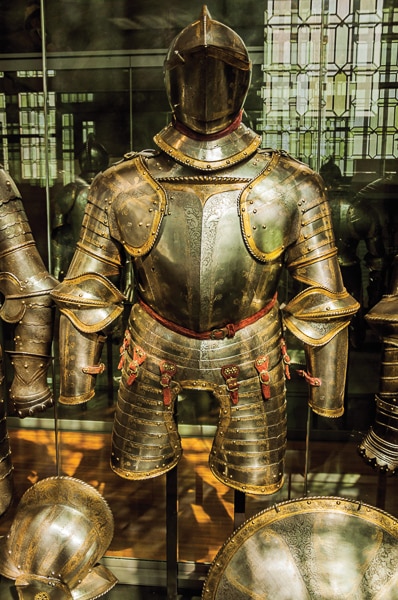
Practical Information for Visiting Napoleon’s Tomb
Location: Napoleon’s tomb is located in Paris inside Hotel des Invalides at 129 rue de Grenelle.
Hours: Les Invalides is open daily from 10:00 am- 6:00 pm (9:00 pm on Tuesdays). Closing days are January 1, May 1, and December 25. Confirm current hours here.
Admission Fees: Yes. Current prices can be found here.
- Your ticket includes the Tomb of Napoleon, the Royal Chapel (Dome des Invalides), and the Army Museum exhibits.
- Admission to Les Invalides is included in the Paris Museum Pass.
Buy Tickets: You can buy priority entrance tickets online here.
Paris Accommodations
If you’re planning to visit Napoleon’s tomb and need accommodations, here is a list of hotels in Paris. Please consider booking your Paris accommodations through the included link. It costs nothing extra and helps support this website.

More Burial Places in Paris
- Pantheon of Paris- A Mausoleum for France’s National Heroes
- Père Lachaise Cemetery- Paris’ Legendary Necropolis
- Père Lachaise Cemetery Burials- Famous Graves in Père Lachaise Cemetery
- Montmartre Cemetery- Paris’ North Cemetery
- Paris Catacombs- History, Facts and Tips for Visiting
- Montparnasse Cemetery- Paris’ South Cemetery
